
Guard mounting, changing the guard, or the changing of the guard, is a formal ceremony in which sentries performing ceremonial guard duties at important institutions are relieved by a new batch of sentries. The ceremonies are often elaborate and precisely choreographed. They originated with peacetime and battlefield military drills introduced to enhance unit cohesion and effectiveness in the late 17th and early 18th centuries.

Major-General Robert Craufurd was a British soldier. Craufurd was born at Newark, Ayrshire, the third son of Sir Alexander Craufurd, 1st Baronet, and the younger brother of Sir Charles Craufurd. After a military career which took him from India to the Netherlands, in 1810 in the Napoleonic Peninsular War he was given command of the Light Division, composed of the elite foot soldiers in the army at the time, under the Duke of Wellington. Craufurd was a strict disciplinarian and somewhat prone to violent mood swings which earned him the nickname "Black Bob". He was mortally wounded storming the lesser breach in the Siege of Ciudad Rodrigo on 19 January 1812 and died four days later.

The Individual Ready Reserve (IRR) is a category of the Ready Reserve of the Reserve Component of the Armed Forces of the United States composed of former active duty or reserve military personnel. Its governing statute is codified at 10 U.S.C. § 10144. For soldiers in the National Guard of the United States, its counterpart is the Inactive National Guard (ING). As of 22 June 2004, the IRR had approximately 112,000 members composed of enlisted personnel and officers, with more than 200 Military Occupational Specialties are represented, including combat arms, combat support, and combat service support.
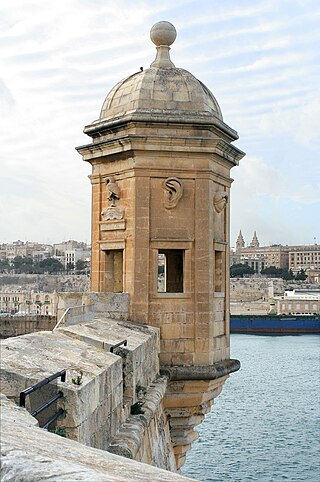
A vedette is a mounted sentry or picket, who has the function of bringing information, giving signals or warnings of danger, etc., to a main body of troops. In modern terms, the soldiers who man listening-posts are the equivalent of vedettes.

The King's Guard are sentry postings at Buckingham Palace and St James Palace, organised by the British Army's Household Division. The Household Division also mounts sentry postings at Horse Guards, known as the King's Life Guard.

A billet is a living-quarters to which a soldier is assigned to sleep. Historically, a billet was a private dwelling that was required to accept the soldier.
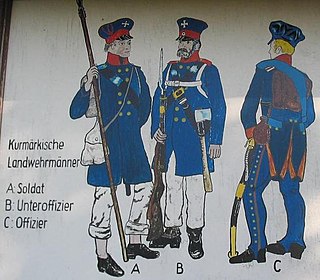
Landwehr, or Landeswehr, is a German language term used in referring to certain national armies, or militias found in nineteenth- and early twentieth-century Europe. In different context it refers to large-scale, low-strength fortifications. In German, the word means "defence of the country"; but the term as applied to an insurrectional militia is very ancient, and lantveri are mentioned in Baluzii Capitularia, as quoted in Hallam's Middle Ages, i. 262, 10th edition.

The Battle of Manila, the first and largest battle of the Philippine–American War, was fought on February 4–5, 1899, between 19,000 American soldiers and 15,000 Filipino armed militiamen. Armed conflict broke out when American troops, under orders to turn away insurgents from their encampment, fired upon an encroaching group of Filipinos. Philippine President Emilio Aguinaldo attempted to broker a ceasefire, but American General Elwell Stephen Otis rejected it, and fighting escalated the next day. It ended in an American victory, although minor skirmishes continued for several days afterward.

Public duties are performed by military personnel, and usually have a ceremonial or historic significance rather than an overtly operational role.

USS Wadsworth (DD-516), a Fletcher-class destroyer, was the second ship of the United States Navy to be named for Commodore Alexander S. Wadsworth (1790–1851). The ship was commissioned in 1943 during World War II. After seeing extensive action during the war, the ship was placed in reserve following it. In 1959 the destroyer was loaned to the West German Navy and renamed Zerstörer 3. She remained a part of the West German Navy until 1980 when the destroyer was transferred to the Hellenic Navy and renamed Nearchos. Nearchos was active until 1991 when she was sold for scrap.
Orders to Sentry is the official title of a set of rules governing sentry duty in the United States Armed Forces. While any guard posting has rules that may go without saying, these orders are carefully detailed and particularly stressed in the U.S. Navy, U.S. Marine Corps, and U.S. Coast Guard. Also known as the 11 General Orders, the list is meant to cover any possible scenario a sentry might encounter on duty.
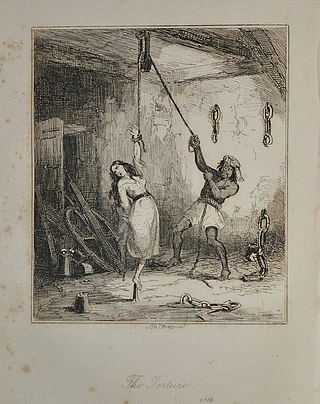
The picket, picquet or piquet was a form of military punishment in vogue in the 16th and 17th centuries in Europe. It consisted of the offender being forced to stand on the narrow flat top of a peg for a period of time. The punishment died out in the 18th century and was so unfamiliar by 1800 that when the then governor of Trinidad, Sir Thomas Picton, ordered Luisa Calderon, a woman of European and African ancestry to be so punished, he was accused by public opinion in England of inflicting a torture akin to impalement. It was thought erroneously that the prisoner was forced to stand on the head of a pointed stake, and this error was repeated in the New English Dictionary.
In military terminology, a countersign is a sign, word, or any other signal previously agreed upon and required to be exchanged between a sentry or guard and anybody approaching his or her post. The term usually encompasses both the sign given by the approaching party as well as the sentry's reply. However, in some armies, the countersign is strictly the reply of the sentry to the password given by the person approaching. A well-known sign/countersign used by the Allied forces on D-Day during World War II: the challenge/sign was "flash", the password "thunder", and the countersign "Welcome". Some armies will select passwords or challenges that are difficult to pronounce by the enemy force speaking a different language.
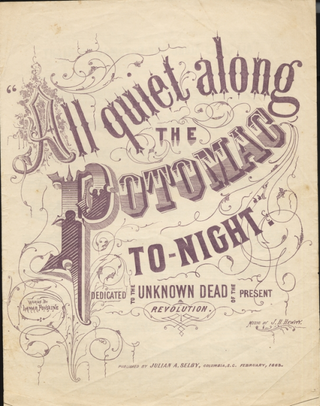
"All Quiet Along the Potomac," originally titled "The Picket Guard," is an 1861 poem by American writer Ethel Lynn Beers.
The Christmas Raid was an attack on 23 December 1939 by the Irish Republican Army (IRA) against the Irish Army and the Phoenix Park Magazine Fort—Ireland's largest munitions dump. The attack resulted in the capture of the munitions dump by the IRA and the seizure of a huge quantity of weapons.

USS Wiltsie (DD-716) was a Gearing-class destroyer in the United States Navy. She was named for Irving Wiltsie. The destroyer entered service in 1946 and remained active with the United States Navy until 1977, when Wiltsie was decommissioned and sold to Pakistan in 1977. The vessel entered service with the Pakistan Navy as PNS Tariq (D165) in 1978. In 1990, the ship was renamed PNS Nazim to allow the name Tariq to be given to a newly-acquired Type 21 frigate. The ship was then transferred to the Pakistan Maritime Security Agency and used as an alongside "at sea" headquarters for the agency. Though afloat, the vessel no longer sails.

A guardhouse is a building used to house personnel and security equipment. Guardhouses have historically been dormitories for sentries or guards, and places where sentries not posted to sentry posts wait "on call", but are more recently staffed by a contracted security company. Some guardhouses also function as jails.
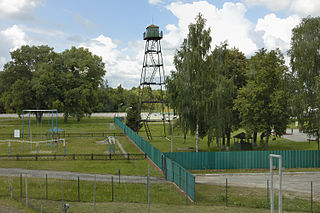
A border outpost, border out post, border observation post or BOP is an outpost maintained by a sovereign state on its border, usually one of a series placed at regular intervals, to watch over and safeguard its border with a neighboring state with which it may or may not have friendly relations. Such posts are staffed by border guards and are at all times connected by radio communication with ongoing border patrols in their region and the force headquarters in the interior of the country for their day-to-day functioning, passing on intelligence and for requesting supplies and any needed reinforcements in emergencies.
Screening is a defensive tactic in which a picket or outposts are used to hide the nature and strength of a military force; provide early warning of enemy approach; impede and harass the enemy main body with indirect fire; and report on the activity of the enemy main body. Screening forces may conduct patrols, establish outposts, and help destroy enemy reconnaissance units.
















